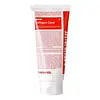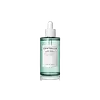What's inside
What's inside
 Key Ingredients
Key Ingredients

 Benefits
Benefits

 Concerns
Concerns

 Ingredients Side-by-side
Ingredients Side-by-side

Water
Skin ConditioningDipropylene Glycol
HumectantGlycerin
HumectantButylene Glycol
Humectant1,2-Hexanediol
Skin ConditioningIsopropyl Isostearate
EmollientNiacinamide
SmoothingSodium Hyaluronate
HumectantHydroxypropyltrimonium Hyaluronate
Caprylic/Capric Triglyceride
MaskingHydrolyzed Hyaluronic Acid
HumectantSodium Acetylated Hyaluronate
HumectantHyaluronic Acid
HumectantAcetyl Hexapeptide-8
HumectantSodium Hyaluronate Crosspolymer
HumectantHydrolyzed Sodium Hyaluronate
Skin ConditioningAstaxanthin
Skin ConditioningPotassium Hyaluronate
Skin ConditioningLavandula Angustifolia Flower Extract
CleansingSalvia Sclarea Extract
AntiseborrhoeicHyacinthus Orientalis Extract
Skin ConditioningChamomilla Recutita Flower Extract
MaskingBorago Officinalis Extract
EmollientCentaurea Cyanus Flower Extract
AstringentCarbomer
Emulsion StabilisingArginine
MaskingBeeswax
Emulsion StabilisingButyrospermum Parkii Butter
Skin ConditioningStearyl Alcohol
EmollientHydrogenated Polyisobutene
EmollientDimethicone
EmollientSorbitan Stearate
EmulsifyingPanthenol
Skin ConditioningPolysorbate 60
EmulsifyingPEG-40 Hydrogenated Castor Oil
EmulsifyingPalmitic Acid
EmollientC14-22 Alcohols
Emulsion StabilisingAmmonium Acryloyldimethyltaurate/Vp Copolymer
Hydrogenated Lecithin
EmulsifyingAdenosine
Skin ConditioningPolyacrylate-13
C12-20 Alkyl Glucoside
EmulsifyingTocopheryl Acetate
AntioxidantDisodium EDTA
Polyisobutene
Propanediol
SolventPolyglyceryl-10 Diisostearate
EmulsifyingEthylhexylglycerin
Skin ConditioningPolysorbate 20
EmulsifyingSorbitan Isostearate
EmulsifyingGlucose
HumectantCI 42090
Cosmetic ColorantParfum
MaskingHexyl Cinnamal
PerfumingAlpha-Isomethyl Ionone
PerfumingHydroxycitronellal
PerfumingCitronellol
PerfumingLimonene
PerfumingGeraniol
PerfumingLinalool
PerfumingWater, Dipropylene Glycol, Glycerin, Butylene Glycol, 1,2-Hexanediol, Isopropyl Isostearate, Niacinamide, Sodium Hyaluronate, Hydroxypropyltrimonium Hyaluronate, Caprylic/Capric Triglyceride, Hydrolyzed Hyaluronic Acid, Sodium Acetylated Hyaluronate, Hyaluronic Acid, Acetyl Hexapeptide-8, Sodium Hyaluronate Crosspolymer, Hydrolyzed Sodium Hyaluronate, Astaxanthin, Potassium Hyaluronate, Lavandula Angustifolia Flower Extract, Salvia Sclarea Extract, Hyacinthus Orientalis Extract, Chamomilla Recutita Flower Extract, Borago Officinalis Extract, Centaurea Cyanus Flower Extract, Carbomer, Arginine, Beeswax, Butyrospermum Parkii Butter, Stearyl Alcohol, Hydrogenated Polyisobutene, Dimethicone, Sorbitan Stearate, Panthenol, Polysorbate 60, PEG-40 Hydrogenated Castor Oil, Palmitic Acid, C14-22 Alcohols, Ammonium Acryloyldimethyltaurate/Vp Copolymer, Hydrogenated Lecithin, Adenosine, Polyacrylate-13, C12-20 Alkyl Glucoside, Tocopheryl Acetate, Disodium EDTA, Polyisobutene, Propanediol, Polyglyceryl-10 Diisostearate, Ethylhexylglycerin, Polysorbate 20, Sorbitan Isostearate, Glucose, CI 42090, Parfum, Hexyl Cinnamal, Alpha-Isomethyl Ionone, Hydroxycitronellal, Citronellol, Limonene, Geraniol, Linalool
Centella Asiatica Extract 55%
CleansingChamaecyparis Obtusa Water
MaskingMelaleuca Alternifolia Leaf Water 9.4%
AntimicrobialPinus Palustris Leaf Extract
TonicGlycerin
HumectantButylene Glycol
HumectantMethyl Gluceth-20
HumectantDipropylene Glycol
HumectantGlycereth-26
Humectant1,2-Hexanediol
Skin ConditioningWater
Skin ConditioningHydroxyacetophenone
AntioxidantAmmonium Acryloyldimethyltaurate/Vp Copolymer
Propanediol
SolventPolyglyceryl-10 Laurate
Skin ConditioningEthylhexylglycerin
Skin ConditioningPentylene Glycol
Skin ConditioningCaprylyl Glycol
EmollientDisodium EDTA
Melaleuca Alternifolia Leaf Oil
AntioxidantOenothera Biennis Flower Extract
AstringentPueraria Lobata Root Extract
HumectantUlmus Davidiana Root Extract
Skin ConditioningCentella Asiatica Extract 55%, Chamaecyparis Obtusa Water, Melaleuca Alternifolia Leaf Water 9.4%, Pinus Palustris Leaf Extract, Glycerin, Butylene Glycol, Methyl Gluceth-20, Dipropylene Glycol, Glycereth-26, 1,2-Hexanediol, Water, Hydroxyacetophenone, Ammonium Acryloyldimethyltaurate/Vp Copolymer, Propanediol, Polyglyceryl-10 Laurate, Ethylhexylglycerin, Pentylene Glycol, Caprylyl Glycol, Disodium EDTA, Melaleuca Alternifolia Leaf Oil, Oenothera Biennis Flower Extract, Pueraria Lobata Root Extract, Ulmus Davidiana Root Extract
 Reviews
Reviews

Ingredients Explained
These ingredients are found in both products.
Ingredients higher up in an ingredient list are typically present in a larger amount.
1,2-Hexanediol is a synthetic liquid and another multi-functional powerhouse.
It is a:
- Humectant, drawing moisture into the skin
- Emollient, helping to soften skin
- Solvent, dispersing and stabilizing formulas
- Preservative booster, enhancing the antimicrobial activity of other preservatives
Ammonium Acryloyldimethyltaurate/Vp Copolymer (let's call it AAVC for short) is a synthetically created polymer. It's used as a film-forming agent and used to thicken the consistency of products.
AAVC is able to increase the consistency and viscosity of products due to its large molecule size. It also prevents ingredients from separating.
Butylene Glycol (or BG) is used within cosmetic products for a few different reasons:
Overall, Butylene Glycol is a safe and well-rounded ingredient that works well with other ingredients.
Though this ingredient works well with most skin types, some people with sensitive skin may experience a reaction such as allergic rashes, closed comedones, or itchiness.
Learn more about Butylene GlycolDipropylene Glycol is a synthetically created humectant, stabilizer, and solvent.
This ingredient helps:
Dipropylene glycol is technically an alcohol, but it belongs to the glycol family (often considered part of the ‘good’ alcohols). This means it is hydrating and gentle on skin unlike drying solvent alcohols like denatured alcohol.
As a masking agent, Dipropylene Glycol can be used to cover the smell of other ingredients. However, it does not have a scent.
Studies show Dipropylene Glycol is considered safe to use in skincare.
Learn more about Dipropylene GlycolDisodium EDTA plays a role in making products more stable by aiding other preservatives.
It is a chelating agent, meaning it neutralizes metal ions that may be found in a product.
Disodium EDTA is a salt of edetic acid and is found to be safe in cosmetic ingredients.
Learn more about Disodium EDTAEthylhexylglycerin (we can't pronounce this either) is commonly used as a preservative and skin softener. It is derived from glyceryl.
You might see Ethylhexylglycerin often paired with other preservatives such as phenoxyethanol. Ethylhexylglycerin has been found to increase the effectiveness of these other preservatives.
Glycerin is already naturally found in your skin. It helps moisturize and protect your skin.
A study from 2016 found glycerin to be more effective as a humectant than AHAs and hyaluronic acid.
As a humectant, it helps the skin stay hydrated by pulling moisture to your skin. The low molecular weight of glycerin allows it to pull moisture into the deeper layers of your skin.
Hydrated skin improves your skin barrier; Your skin barrier helps protect against irritants and bacteria.
Glycerin has also been found to have antimicrobial and antiviral properties. Due to these properties, glycerin is often used in wound and burn treatments.
In cosmetics, glycerin is usually derived from plants such as soybean or palm. However, it can also be sourced from animals, such as tallow or animal fat.
This ingredient is organic, colorless, odorless, and non-toxic.
Glycerin is the name for this ingredient in American English. British English uses Glycerol/Glycerine.
Learn more about GlycerinPropanediol is an all-star ingredient. It softens, hydrates, and smooths the skin.
It’s often used to:
Propanediol is not likely to cause sensitivity and considered safe to use. It is derived from corn or petroleum with a clear color and no scent.
Learn more about PropanediolWater. It's the most common cosmetic ingredient of all. You'll usually see it at the top of ingredient lists, meaning that it makes up the largest part of the product.
So why is it so popular? Water most often acts as a solvent - this means that it helps dissolve other ingredients into the formulation.
You'll also recognize water as that liquid we all need to stay alive. If you see this, drink a glass of water. Stay hydrated!
Learn more about Water